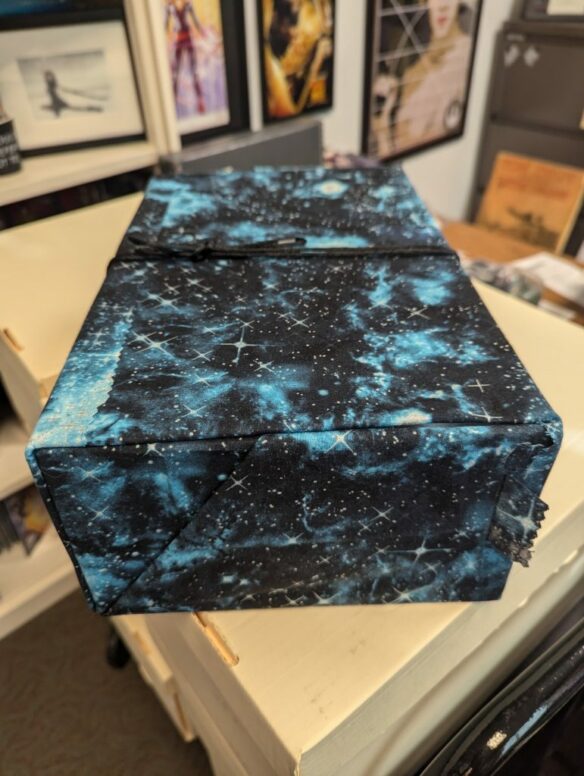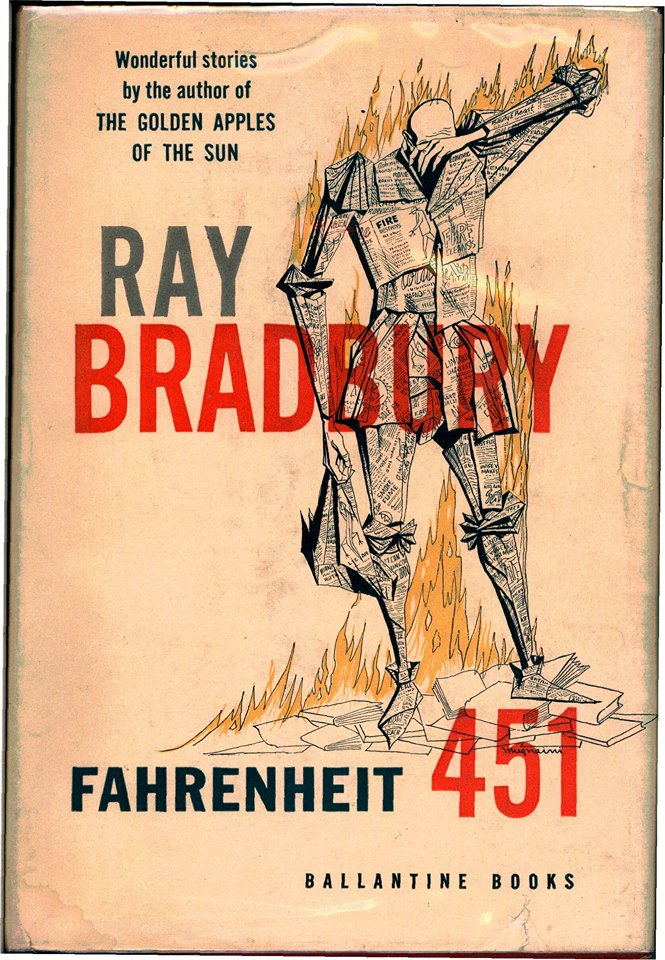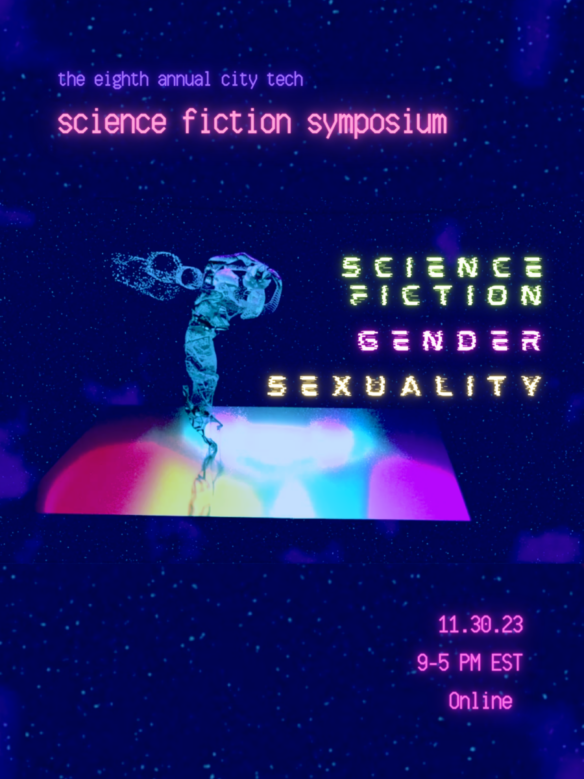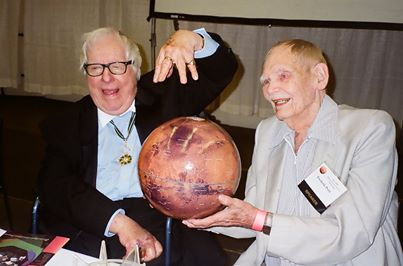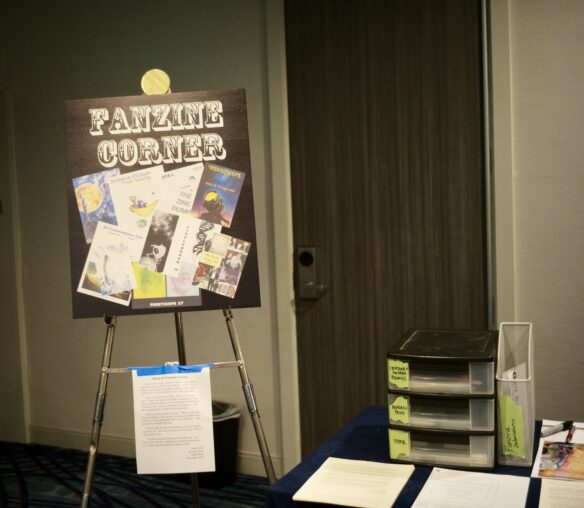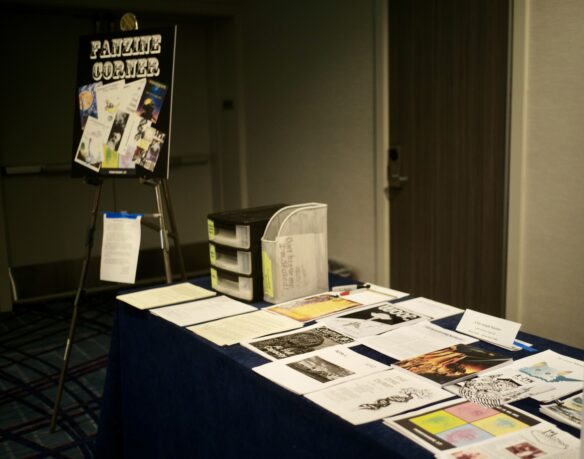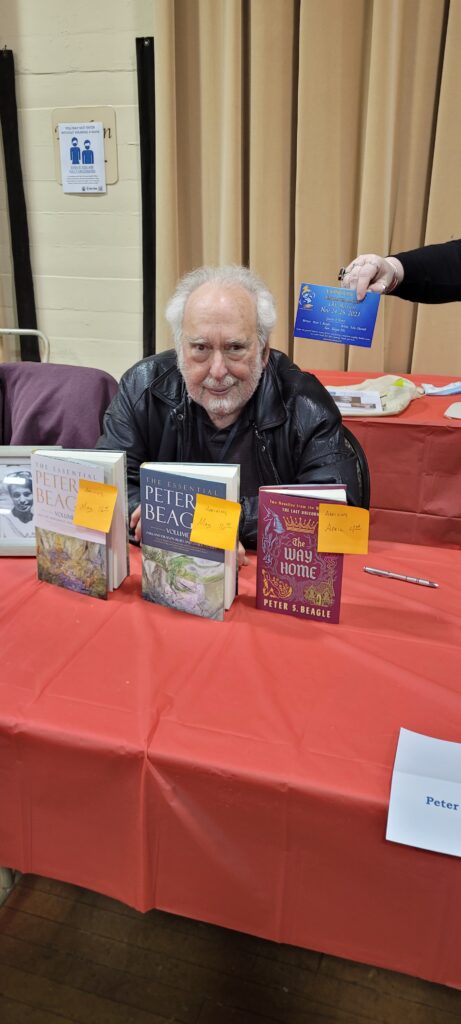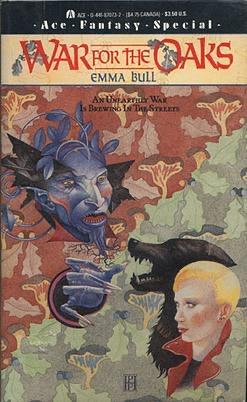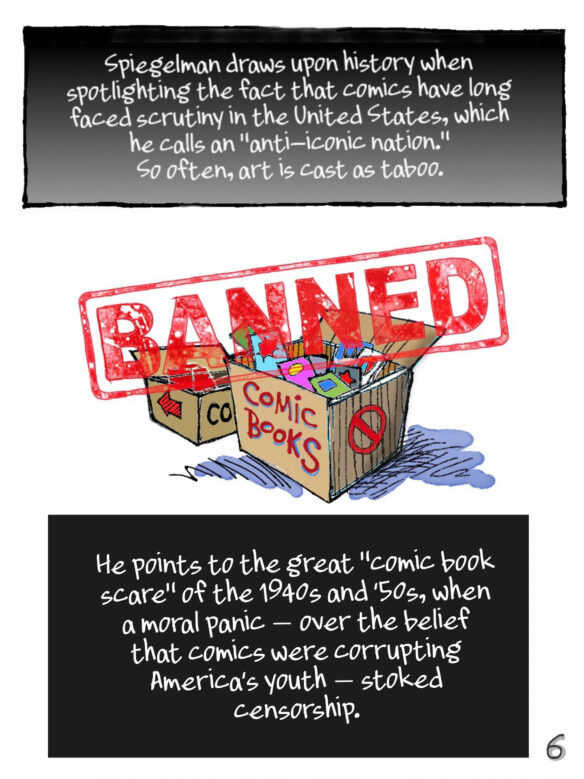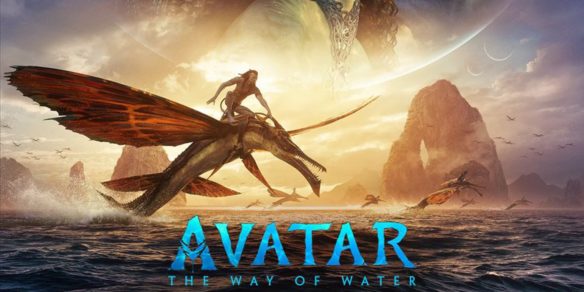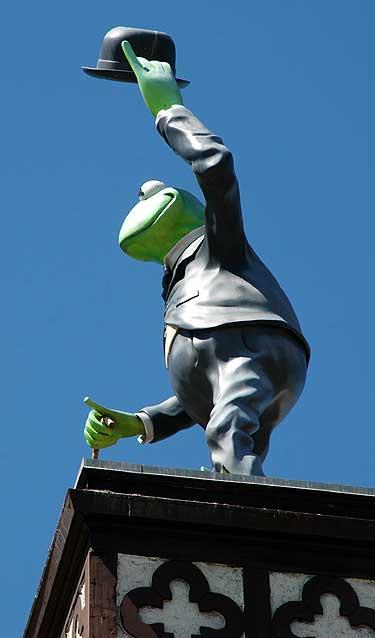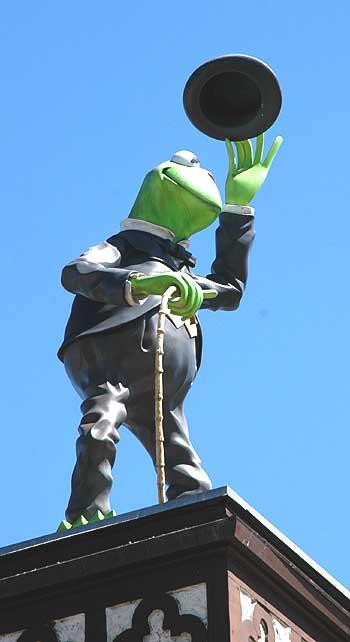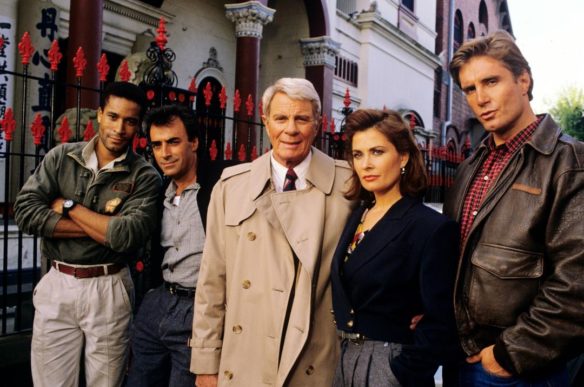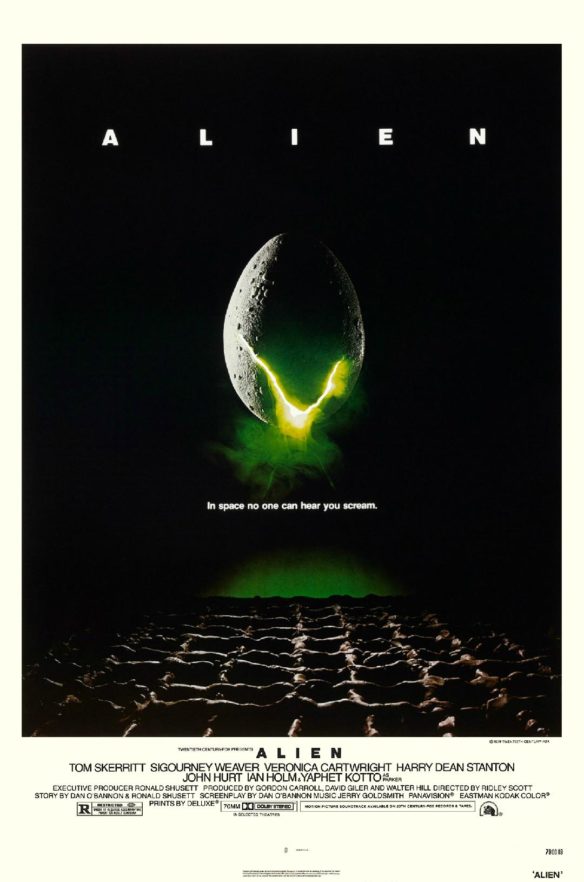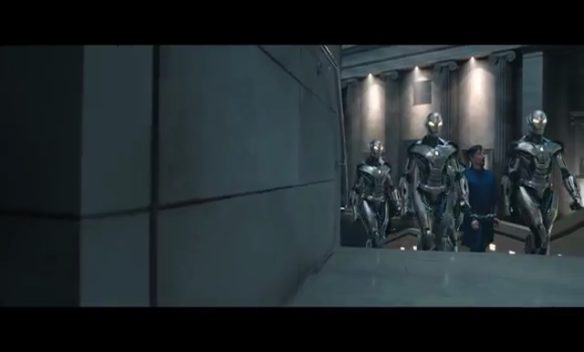(1) PICKETT LINE. I love this one by Adam Roberts. (Inspired by the Bobby “Boris” Pickett song.)
(2) WHY NOT SAY WHAT HAPPENED? In Episode 5 of Scott Edelman’s podcast Why Not Say What Happened? we get the story of “My Rooftop Dance with Larry Lieber” at the 1974 Worldcon.
Join me as I demonstrate the limits of my memory by telling tales of why my first Worldcon was supposed to have been my second Worldcon, the question I never got around to asking my cousin, the actor Herb Edelman, which song I sang while dancing across a Manhattan rooftop with Larry Lieber, what Fantastic Four moment motivated the first letter I ever wrote to a comic book company, the string of serendipities which led to one of my DC horror stories being adapted as an episode of Tales from the Darkside, how the Washington Post got me a job editing Science Fiction Age magazine, and more.
(3) MEMORIES FINALLY RETURNING. [Item by Michael Dobkins.] This is a follow up to a news item by Bruce D. Arthurs in the October 19 Pixel Scroll ((8) SECOND, JUST SAY, ‘I FORGOT’.) A new video on the Beinecke Library at Yale’s YouTube just dropped that gives more details on the exhibit and even quotes briefly letters between Disch and David Gerrold about the project at the end.

Remembering “Amnesia” with Claire Fox- MAB 10/14/24
A talk in conjunction with the exhibition “Remembering ‘Amnesia’: Rebooting the First Computerized Novel” on view now in the Hanke Gallery at Sterling Memorial Library. “Amnesia”—a work of interactive science fiction by Thomas M. Disch, published in 1986—was an early attempt to bring video games into the realm of literary art by translating a novelist’s script into a medium that readers could only experience by interacting with a computer. This exhibition traces how “Amnesia” moved from story idea to digital manifestation. Visitors can also play the game on workstations in the Hanke Gallery in Sterling Memorial Library and in Bass Library, using Emulation-as-a-Service Infrastructure (EaaSI) software. Included is the story of the library’s Digital Preservation unit’s work to bring the interactive, computerized novel to life. Claire Fox, curator of the exhibition, is Software Preservation and Emulation Librarian in Yale Library. Mondays at Beinecke online talks focus on materials from the collections and include an opening presentation at 4pm followed by conversation and Q & A beginning about 4:30pm until 5pm.
There is also an Amnesia: Restored website devoted to the interactive novel that offers “a new version of the cult classic published by Electronic Arts 1986, now available on the web for contemporary computers.”
(4) UNREAL ESTATE DEVELOPMENTS. Arturo Serrano gives Poltergeist an almost theological analysis at Nerds of a Feather: “First Scare: Poltergeist”.
…Poltergeist feels like a condensation of mystical currents of thought that had gained strength during the hippie era but really date back to the spiritualist fad of the 19th century. Advances in the understanding of electromagnetism coincided with a growing interest in the inner workings of the mind, and it was only natural that a theory eventually formed linking electromagnetism with the paranormal. If you didn’t know any better, it made some sort of sense: if you consider radio waves, they’re an invisible force that exists all around us and can even pass through us, and have very tangible effects if you have a properly sensitive machine at hand. So it wasn’t too much of a stretch to suppose that ghosts worked the same way. Poltergeist is an heir to over a century of superstition that viewed in electrical devices a viable tool for contacting the spiritual realm.
But Poltergeist does more than that. It also takes advantage of the moral panic that was forming around mass media and the way the TV set ended up altering not only the inner dynamics of the American family, but also the rhythm of daily life. People in Poltergeist time their activities by the programming schedule of TV; their day ends when the last broadcast ends. Even before malevolent spirits jump out of the screen, they’re already under the spell of TV….
(5) SURPRISE PACKAGE. A winner of the Nobel Prize for Literature wants a publisher to look at his trunk stories. Forward follows the trail: “Bob Dylan wants a horror publisher to look at his stories”.
In breaks on his Never Ending Tour, Bob Dylan has returned to social media to send his regrets to the Buffalo Sabres hockey team for missing a game, recommend an incredibly famous restaurant in New Orleans and, in a new twist for the Nobel laureate, hint at his spooky literary aspirations.
“At the hotel in Frankfurt there was a publishing convention and every room was taken, parties all night,” Dylan posted on the social platform X (formerly Twitter) Oct. 23.
“I was trying to find Crystal Lake Publishing so I could congratulate them on publishing The Great God Pan, one of my favorite books,” Dylan continued. “I thought they might be interested in some of my stories. Unfortunately it was too crowded and I never did find them.”
As always, Dylan speaks, the world listens. It came as quite the October surprise for Crystal Lake, a Bloemfontein, South Africa-based press specializing in dark fiction and horror whose current titles include an anthology called Dastardly Damsels and Blood and Bullets: A Trio of Western Horror Novellas. (Yes, they also published a “revamped” edition of Machen’s 1894 Great God Pan, about a sinister woman who seems to be driving powerful men to suicide.)
“We had literary agents in Frankfurt representing our books, so we weren’t there in person,” Crystal Lake’s founder and CEO Joe Mynhardt said in an email.
Mynhardt said that, since the Dylan post, they’d spent a few days tracking down the songwriter and his team.
“It’s my understanding that they now have our contact info, so fingers crossed,” Mynhardt wrote in his email Saturday.
While Dylan has previously published poetry, the first part of his memoirs and most recently his 2022 book The Philosophy of Modern Song, it remains to be seen what scary stories he may have in his drawer. Less of a mystery is what he may have admired in Machen’s novella — a tale of sex, pagan gods and death. Somehow this all seems very on brand, even if it’s lacking in the Americana department (Machen was Welsh, like another great poet named Dylan)…
(6) TODAY’S 270. Chris M. Barkley’s essay for 270 Reasons (“Why Kamala Harris?”) has gone live: “Because the lawlessness, the fascism, the fearmongering must come to an end” (which he also shared with File 770 a few days ago).
… The election of Kamala Harris will not end the partisan and political divisiveness that ails America. But it, along with a majority in the House and Senate, will be an important and vital first step toward restoring a sense that democracy, and the underlying systems that support and nourish it, can prevail and grow.
Fear sells—until we, collectively, stop buying it.
We have no excuse. We know better, and now we must do better….

(7) AFI LIFE ACHIEVEMENT 2025 ANNOUNCED. “AFI Life Achievement Award to go to Francis Ford Coppola in 2025” says The Hollywood Reporter. Yes, in spite of Megalopolis.
The filmmaker has been selected to receive the 50th installment of the organization’s highest honor, the AFI Life Achievement Award, at a ceremony scheduled to take place at Hollywood’s Dolby Theatre on April 26, 2025. He will be 86 at the time. The tribute will air on TNT with encore presentations on Turner Classic Movies. All proceeds from the gala will support AFI’s education and arts initiatives.
The AFI Life Achievement Award is presented to an honoree “whose talent has in a fundamental way advanced the film art, whose accomplishment has been acknowledged by scholars, critics, professional peers and the general public, and whose work has stood the test of time.”…
(8) (BOW) WOW! “Kathryn Hahn Reacts to Agatha-Themed Dog Halloween Costume: ‘Wagatha Barkness?!’” at Entertainment Tonight. Watch the video at the link.
Kathryn Hahn on the success of ‘Agatha All Along’
Kathryn: “Jac Schaeffer who wrote it is a genius because she wrote Wandavision too and so I just hurled myself with faith into whatever she would do, she knows this character really well.”
Kathryn Hahn on a viral Halloween dog costume inspired by the Disney+ series
Kathryn: “Apparently there is a dog costume called Wagitha Barkness… which I’m like, that seems amazing!”

(9) ALTERNATIVES TO OUR DIGITAL FUTURE. Joshua Rothman asks “Could Steampunk Save Us?” – behind a paywall in The New Yorker.
In 1990, Gibson and Bruce Sterling wrote “The Difference Engine,” an alternative-history novel, set in the nineteenth century, in which computers are built about a hundred years earlier than in reality, using quirky systems including gears, wheels, and levers. The novel helped popularize the genre of steampunk, in which nineteenth- and twentieth-century technologies are merged. Arguably, Jules Verne and H. G. Wells wrote steampunk avant la lettre, simply by crafting science fiction in the late nineteenth century; the genre’s aesthetic markers-valves, pipes, airships, monocles-have since informed the imaginative worlds of films and television shows like “Snowpiercer,” “Silo,” and much else. Steampunk mounts an imaginative protest against the apparent seamlessness of the high-tech world; it’s an antidote to the ethos of Jony Ive. It’s also fun because it’s counterfactual. It’s fascinating to imagine, implausibly, how ravishing technology could be constructed out of yesterday’s parts.
But what if the world really is constructed that way? In that case, it could be a mistake to put too much faith in digital perfection. We might need to fiddle with our technology more than we think.
(10) STOP BEING MIDDLE-CLASS IMMEDIATELY. “This is a Thomas Ha Fanzine Now” at Seize the Press, edited by Jonny Pickering and Karlo Yeager Rodríguez.
The other week someone asked me why I thought there was such discomfort with unresolved narratives and non-cathartic endings in some corners of the contemporary short story world. I thought about it a bit and figured my answer would be worth sharing.
The conversation came about after I read a Thomas Ha story called “The Brotherhood of Montague St. Video”, which features a story within the story — an old pulp western the narrator discovers has been altered so that the original ending (where the protagonist is defeated by the evil sheriff and limps off into the desert) is rewritten into a glorious, audience-pleasing victory. As with any Thomas Ha story, there are layers stacked on layers to the narrative, but one thing it got me thinking about is why so much contemporary media (and short fiction in particular) is so ill at ease with leaving the audience ill at ease.
I can’t say for sure why this is, but I can speculate. I think one reason is there’s an influential school of (largely American) middle class liberal writers who dominate a lot of the bigger magazines and who come at fiction from the viewpoint that writing and reading stories constitutes some form of activism. You see it a lot in the ‘power of stories’ assertions that go round from time to time and is also partly why we see so much didactic fiction out there, because it’s a view that thinks the purpose of art is to ‘instruct’ and to portray the ‘correct opinions’, whereas for me good art raises more questions than it answers….
… At the risk of sounding like a vulgar Marxist I think western society in general (and, from what I can gather as a Brit, particularly American society, which has such a big effect on western culture as a whole) has reached a stage where, for lots of people, collectively trying to change the world can seem pretty hopeless, and so there’s a tendency to retreat into a very individualistic notion of activism, where if you’re working on yourself and thinking the right things and reading the right things, even when that thing is fiction, it feels like praxis. It’s incredibly reactionary and has a stultifying effect on art in my opinion, because it results in these calcifying stories that do nothing to challenge, and whose purpose and effect is simply to reassure….
(11) TERI GARR (1944-2024). Teri Garr, who received an Oscar nomination for her role in Tootsie, died October 29 reports the AP. She died of multiple sclerosis “surrounded by family and friends,” said publicist Heidi Schaeffer. Garr battled other health problems in recent years and underwent an operation in January 2007 to repair an aneurysm.
Garr is best remembered by fans playing the helpmate in four genre classics:
- Wife, Ronnie Neary, to Richard Dreyfus in Close Encounters of the Third Kind
- Wife, Bobby Landers, to John Denver in Oh, God
- Lab Assistant, Inge, to Gene Wilder in Young Frankenstein
- Office Assistant, Roberta Lincoln to Robert Lansing in Star Trek’s “Assignment Earth” episode
She also appeared on the Sixties Batman series. And forty years later she voiced the character of Mary McGinnis in the animated “Batman Beyond” TV series, and Sandy Gordon in 2003’s What’s New, Scooby Doo? animated series.
(12) TODAY’S BIRTHDAY.
[Written by Paul Weimer.]
Born October 29, 1906 — Fredric Brown. (Died 1972.)
By Paul Weimer: I first encountered Fredric Brown’s work with a pastoral work known as “The Waverlies”. Sometime in the near future, a peculiar sort of alien arrives on earth that is invisible, and eats all forms of radio, and electromagnetic signals and power fail. The United States and the rest of the world is thus plunged into a late Victorian era of technology. It was and is a pastoral, gentle story of the hands of time being stopped and put backward to a slower pace, permanently. The story nagged at me, though, even as I liked it. Such a technological change would be wrenching and millions…if not more, would die in the result (c.f. S M Stirling’s The Change series). I don’t think Brown considered that. But this is notably one of Philip K Dick’s favorite short stories. It has a power…even if it doesn’t realize its full implications and problematic nature
But he considered and thought about a lot of other SF ideas in other fantastic stories. His story “Answer” has the classic line you know even if you haven’t read it “NOW there is a God”. “Arena” is the basis of the Star Trek episode where Kirk fights a Gorn. And there are plenty more where those come from. I haven’t delved into his extensive work with mystery novels and stories, but if that is your jam, Brown has a plethora of work for you once you finish his science fiction stories and short novels.
But as much as I like “The Waverlies” (even as I recognize the problematic aspects of the story), my favorite Brown story is probably his most definitive one, and that is “What Mad Universe”. You probably know this story if you read it. A SF book editor finds himself in a world whose ideas run on SF magazine story conventions. With a breakneck pace and change of action and twists at a pace that Van Vogt might envy, the story is a rollercoaster and deconstruction of what was soon to become a dying breed — pulp SF stories. It thus stands as the Pulp Science Fiction story for as unwitting capstone of the era, and it’s a lot of fun. I’m not the only one who thinks this, as witness Lawrence Block’s The Man Who Met Frederic Brown, which takes up on this trope and references that story directly.

(13) COMICS SECTION.
Bliss has a big problem.
Crankshaft tries a crossover.
(14) CHARLES BURNS RETURNS. [Item by Steven French.] Charles Burns, creator of Black Hole is back with a new graphic novel, Final Cut: “’I was high, drawing my self-portrait in a toaster’: the thrilling return of graphic novelist Charles Burns” in the Guardian.
…Burns became obsessed with monsters at a young age. His father had “every kind of hobby”, which meant the house was always full of art tools and Indian ink. Burns would try to recreate comics he found around the house but his awakening came in early 1969 when a kid at school introduced him to Zap Comix, helmed by the godfather of underground comix Robert Crumb. “Suddenly, here’s this thing with intense drawings! I wasn’t interested in Captain America and Iron Man – but I would imitate these psychedelic comics.”
Burns disappears again and comes back with some of his early examples. They have a beautiful, frantic quality – a kind of professionalised bedlam – with all the hallmarks of his current work, from weird monsters to attractive adolescents. The cartoonist Lynda Barry once wrote of his style and the standard he reaches: “You can’t believe a person could do it with regular human hands. It’s the kind of drawing that would have scared the pants off you in grade school, not only because the images are so eerie but because they are too perfectly done, and not good or evil enough for you to tell what you are supposed to think about them.”
That eerie perfectionism is right there in his earliest work. It’s this style that excited Spiegelman, who agreed to publish Burns in Raw in the 1980s. It’s why the cult literary magazine The Believer, founded by Dave Eggers in 1998, used Burns for every cover until 2014…
(15) HOW WOULD YOU TRANSLATE IT? From Viktoria on Threads:

(16) TV VIEWING RECOMMENDATIONS FOR LAST-MINUTE JACK O’LANTERN CARVERS. In anticipation of Halloween, JustWatch has put together a list of the Top 10 spooky movies and TV shows available to stream in the United States based off their 13 million users in the United States.



(17) EARTH ABIDES SERIES. “’Earth Abides’ Trailer: Alexander Ludwig Stars In Series Adaptation” – Deadline tells what to expect.
MGM+ has dropped the first trailer and unveiled the premiere date for Earth Abides, its upcoming post-apocalyptic limited series adaptation of George R. Stewart’s sci-fi novel of the same name. It’s slated to launch December 1 on the streamer.
Written and executive produced by Todd Komarnicki (Sully), who also serves as showrunner, in Earth Abides, when a plague of unprecedented virulence sweeps the globe, the human race is all but wiped out. In the aftermath, as the great machine of civilization slowly and inexorably breaks down, only a few shattered survivors remain to struggle against the slide into extinction….
(18) A VISIT TO SHENZHOU-18. Futurism invites us to “Watch Astronauts Give a Rare Tour of China’s Luxurious Space Station”.
…As seen in an almost seven-minute-long video shared by Chinese state-owned news agency CCTV, members of the current Shenzhou-18 crew gave an extensive tour of their temporary abode.
Crew members show off the station’s kitchen, from a small heater that dispenses water into small pouches to a modified microwave. Astronauts also showed off the surprisingly roomy beds that each feature a sizable porthole, with unparalleled views of the Earth below.
We even got a glimpse of the two orbital lab segments, including several cherry tomato and lettuce plants growing in the station’s greenhouse….
[Thanks to Cat Eldridge, SF Concatenation’s Jonathan Cowie, Steven French, Jo Fletcher, Lew Wolkoff, Andrew (not Werdna), Michael Dobkins, Kathy Sullivan, Teddy Harvia, Mike Kennedy, Andrew Porter, John King Tarpinian, and Chris Barkley for some of these stories. Title credit belongs to File 770 contributing editor of the day Cat Eldridge.]

